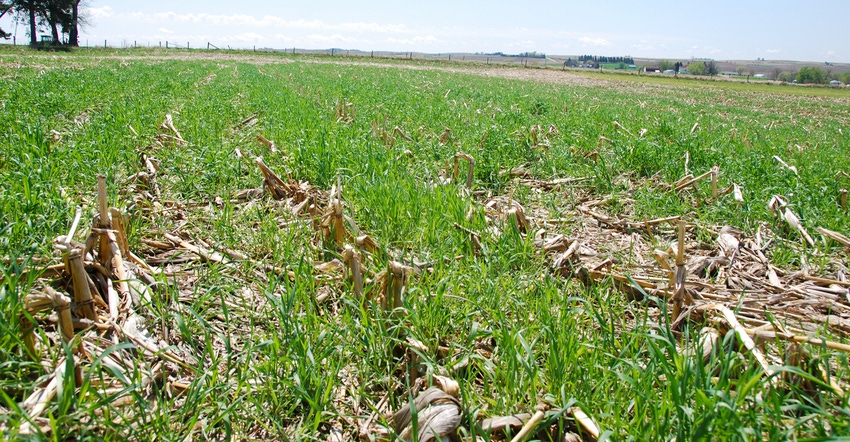March 9, 2020

Iowa Learning Farms (ILF), a hands-on education and outreach program that’s part of ISU Extension, has teamed with Practical Farmers of Iowa (PFI) to publish the final results of their 10-year field-scale study of the effects of winter rye cover crops on corn and soybean yields. With consistent results across the full decade of recording and measurements, the final report notes no significant improvement or decline in cash crop yields attributable to the use of cover crops.
“The cooperating farmers in the study were asked to plant full-field-length contiguous strips with and without the cover crop to provide a valid comparison at field scale,” explains Jackie Comito, director of ILF.
Farmers make cover crops work
Comito notes, “While five farms stayed the course for the full 10 years, other participants saw enough value or improvement to convince them to plant cover crops in the entire field, thereby removing themselves from the study. It was a good problem to have and a testament to the value of cover crops, but it did reduce the number of data points in later years.”
The study included 39 site-years with corn crops and 31 site-years for soybean crops. All farms included in the study were using corn-soybean rotation. In corn, three site-years showed yield increases, and five saw reductions. With soybeans, 10 site-years had improvements, and two had yield reductions. Cooperating farmers indicated that the reductions were primarily attributable to planter settings that were adjusted to account for additional biomass for subsequent plantings.
More crop residue, less erosion
“While the yields did not show significant changes, the cooperating farmers noted significant increases in biomass, and reduced erosion and washouts in fields with cover crops,” says Stefan Gailans, PFI project lead. “Keeping the rich Iowa soil and nutrients in the fields not only helps maintain productivity on the farms, it also keeps it out of the state’s waterways, thereby contributing to improved water quality for all. PFI is pleased with the results of this study and eager to share the results and cover crop best practices with the farming community.”
The project was funded by the State Soil Conservation Committee, the Iowa Department of Agriculture & Land Stewardship, and the Leopold Center for Sustainable Agriculture.
To see the final report, visit these ILF and PFI sites respectively online: bit.ly/ilfwinterrye and bit.ly/pfiwinterrye.
To learn more about Iowa Learning Farms outreach and education programs, visit iowalearningfarms.org.
Established in 2004, ILF is building a culture of conservation by encouraging adoption of conservation practices. Farmers, researchers and ILF team members are working together to identify and implement the best management practices that improve water quality and soil health while remaining profitable. Partners of ILF include ISU Extension, Iowa Department of Natural Resources (USEPA Section 319), ISU’s Leopold Center for Sustainable Agriculture, Iowa Department of Agriculture & Land Stewardship, Iowa Natural Resources Conservation Service, Conservation Districts of Iowa, Iowa Farm Bureau, PFI and Growmark Inc.
Source: ISU, which is solely responsible for the information provided and is wholly owned by the source. Informa Business Media and all of its subsidiaries are not responsible for any of the content contained in this information asset.
You May Also Like




